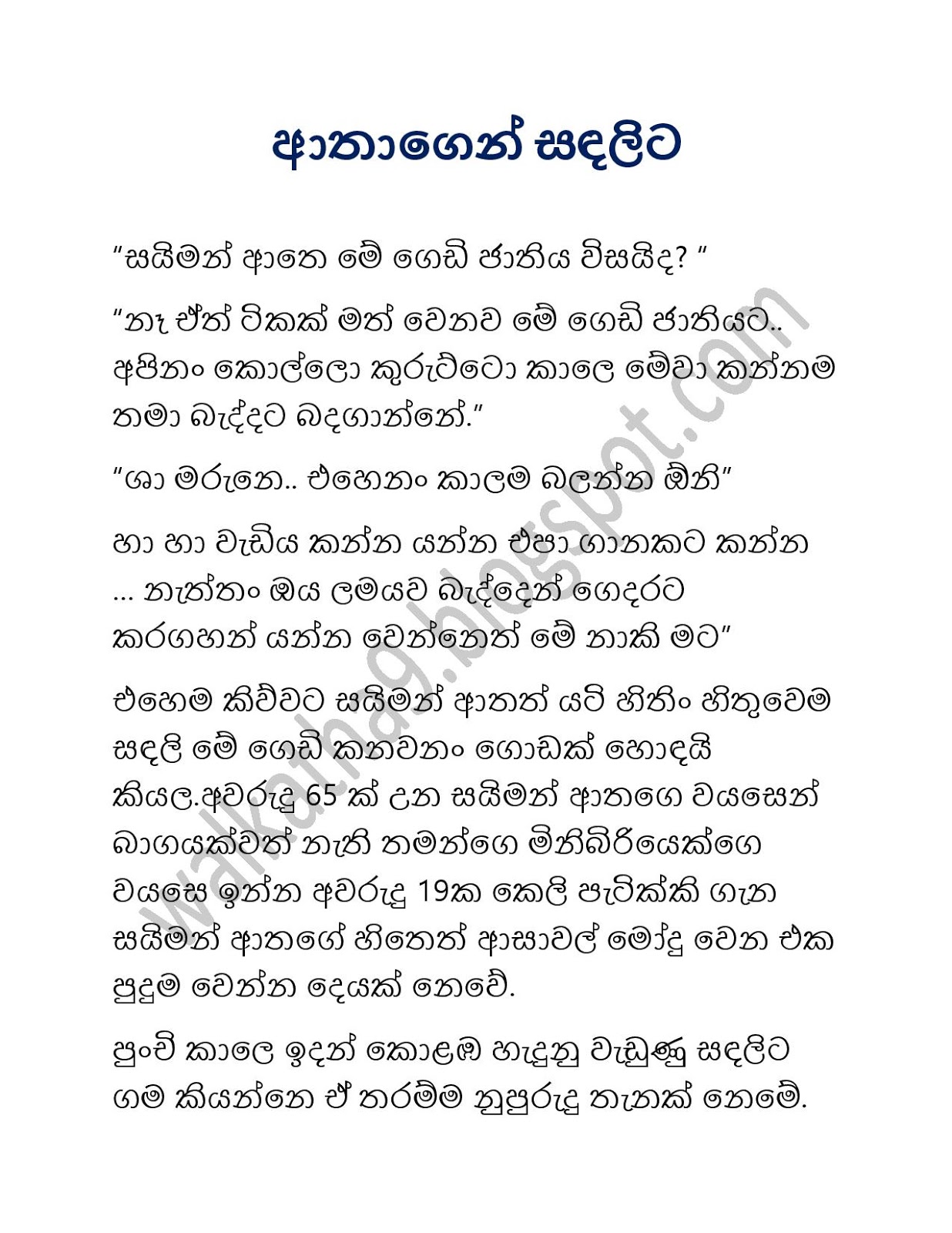Sinhala Walkatha is an enchanting tapestry of stories that have transcended generations in Sri Lanka. These tales, steeped in rich cultural significance, offer a glimpse into the values, beliefs, and traditions of the Sinhala people. As we delve into the heart of these narratives, we uncover not only the essence of Sri Lankan folklore but also the profound impact it has on the identity of its people. From ancient myths to contemporary tales, the Sinhala Walkatha serves as a bridge between the past and the present, illuminating the wisdom that has been passed down through the ages.
The Sinhala Walkatha is not merely a collection of stories; it is a reflection of the collective consciousness of a society that has faced numerous challenges and triumphs throughout its history. These tales often revolve around moral lessons, heroic deeds, and the complexities of human nature, making them relevant even in today's fast-paced world. By exploring these narratives, we can gain valuable insights into the cultural fabric of Sri Lanka and understand the values that shape the lives of its people.
Whether you are a native Sri Lankan or a curious traveler seeking to immerse yourself in the island's rich heritage, the Sinhala Walkatha offers a unique perspective on life, love, and the human experience. In this article, we will journey through the fascinating world of Sinhala Walkatha, exploring its origins, key themes, and the significance it holds in contemporary Sri Lankan society. Join us as we unravel the magic of these timeless tales!
What is the Origin of Sinhala Walkatha?
The origins of Sinhala Walkatha can be traced back to the ancient oral traditions of Sri Lanka, where stories were passed down from one generation to the next. These narratives often served multiple purposes, including entertainment, moral education, and the preservation of cultural identity. The stories were typically narrated during community gatherings, festivals, and religious ceremonies, allowing them to become an integral part of Sri Lankan social life.
How Are Sinhala Walkatha Stories Structured?
Sinhala Walkatha stories often follow a specific structure that includes the introduction of characters, the development of a central conflict, and a resolution that conveys a moral lesson. This structure makes the stories engaging and memorable, allowing listeners to connect with the characters and the situations they face. Common themes include:
- Heroism and bravery
- Love and sacrifice
- Moral dilemmas
- The consequences of greed and selfishness
Who are the Key Characters in Sinhala Walkatha?
The characters in Sinhala Walkatha are often archetypal figures that represent various human traits and societal roles. Some of the most common characters include:
- Heroes: Individuals who embark on quests and face challenges to achieve their goals.
- Villains: Characters that embody negative traits, often serving as obstacles to the heroes.
- Mystical beings: Spirits, gods, and other supernatural entities that influence the course of events.
- Everyday people: Characters that reflect the common experiences and struggles of society.
How Does Sinhala Walkatha Reflect Sri Lankan Culture?
Sinhala Walkatha is a mirror reflecting the values, beliefs, and customs of Sri Lankan society. The tales often emphasize the importance of family, community, and respect for elders. Additionally, the stories frequently highlight the significance of Buddhism in shaping moral conduct and ethical behavior among the Sinhala people. By examining these narratives, we can gain a deeper understanding of how culture shapes individual behavior and societal norms.
What Role Does Sinhala Walkatha Play in Education?
In Sri Lanka, Sinhala Walkatha serves as an educational tool for both children and adults. Educators often utilize these stories to teach moral values, critical thinking, and language skills. The engaging nature of the narratives captures the attention of students, making learning enjoyable and relatable. Moreover, by incorporating Sinhala Walkatha into the curriculum, educators foster a sense of cultural pride and identity among students.
How Can We Preserve Sinhala Walkatha for Future Generations?
Preserving Sinhala Walkatha is essential for maintaining the cultural heritage of Sri Lanka. Here are some ways to ensure these stories continue to thrive:
- Encouraging oral storytelling traditions among families and communities.
- Documenting and publishing these stories in books and digital formats.
- Incorporating Sinhala Walkatha into educational curricula.
- Promoting cultural events and festivals that celebrate Sinhala Walkatha.
Conclusion: The Enduring Legacy of Sinhala Walkatha
The Sinhala Walkatha is more than just a collection of stories; it is the lifeblood of Sri Lankan culture and identity. As we continue to explore and share these narratives, we not only honor the wisdom of our ancestors but also enrich our own lives and those of future generations. By embracing the stories of Sinhala Walkatha, we can ensure that the rich cultural heritage of Sri Lanka remains alive and vibrant for years to come.
You Might Also Like
Unraveling The Bond: Blake Shelton And His Brother RichieSinhala Wal Katha 5: A Journey Through Sri Lankan Folklore
Remembering Lives: The Role Of Anglin Funeral Home Obituaries
Remembering Peter Kane: A Life Of Passion And Dedication
Lorenza Ochmann: A Rising Star In The Entertainment Industry
Article Recommendations
- Cake Boss Cake Boss The Sweet Journey Of Buddy Valastro
- Unveiling The Enigma Justin Biebwr
- Unraveling The Mysteries Of Money6xcom A Gateway To Financial Growth


